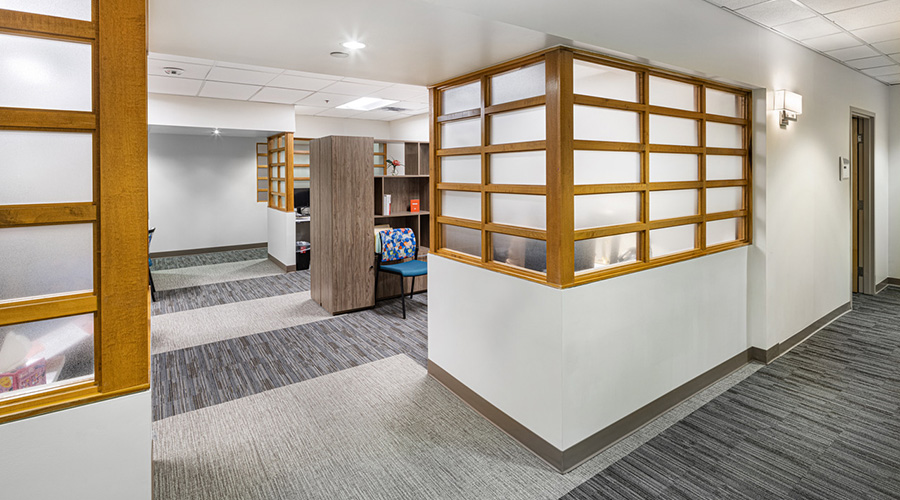On December 1, 2019, sweeping changes to hazardous drug handling in hospitals’ pharmacies will be enforced as the United States Pharmacopeia (USP) Chapter 800 rules go into effect. Healthcare facilities managers are faced with planning these spaces to comply with the new regulations, which means deeply understanding the new rules.
To curb the gap, engineers, health system facilities managers, architectural designers and consultants gathered on Wednesday, Nov. 14th for a presentation to prepare for the new regulations. Led by Kristy Venrick of Array Architects and Tucker Matthews of WSP Engineers, the Arlington, VA-held event offered an in-depth look at understanding and planning spaces for USP 800 compliance.
Among those in attendance was Brett Kass, a Senior Project Manager at Kaiser Permanente. His organization is planning, renovating pharmacies, and building labs, so the information presented at the event was very relevant, he explained.
“Facilities managers need to become familiarized with all of the USP 800, 797, and 795 rules because there’s a lot to them,” Kass said. “It affects workflow. It affects energy usage. It affects so many aspects of operating a building – and not to mention the safety of the workers and protecting the product.”
According to Venrick, who is a pharmacy specialist with 18 years’ experience in planning laboratories and pharmacies, USP 800 regulations are the latest of the organization’s codes, but they do not negate the two other chapters requiring compliance: USP 795 and 797. All three are critical compliance areas for compounding pharmacies. Where USP 797 and 795 focus on sterile and non-sterile preparations of medications within a pharmacy, USP 800 applies to all hazardous drug preparations and storage. Among the directives are protocols for the movement of hazardous drugs from the vendor to the compounding area and then to the patient. This includes ISO classifications for both the anterooms and clean rooms through which those drugs move. The ISO regulations mandate particulate concentrations and air change requirements that correlate with the drug type – hazardous or non-hazardous. For example, in the new USP 800 regulations, hazardous drugs must be stored separately from non-hazardous drugs in negative pressure rooms that are externally vented and have a minimum of 12 air changes per hour.
“It’s a lot to absorb,” Kevin Rosenthal, Facilities Manager at Children’s National Health System said. “It’s a good thing, but it’s going to be challenging.”
Rosenthal says that making sure that facilities are safe, meet codes, and are maintained in terms of infrastructure are key challenges facing Children’s National when it comes to USP 800 compliance. Indeed, ensuring safety for the patients and staff was a recurring theme throughout Venrick’s and Matthews’ presentation.
“I think now that we’ve started adding more and more hazardous drugs, USP regulators said, ‘wait, we have to keep our patients and our staff safe, and we’ve got to crack down,’” Venrick explained. “The number one important thing is the safety of the patients and the staff. That is your number one, most valuable element.”
Jeff Haughey, an independent pharmaceutical consultant for regulatory requirements of good manufacturing process and aseptic facilities, concurs that safety is the north star to which the new rules help pharmacies align.
“Safety of the patient, safety to personnel manufacturers are critical. These are pretty nasty chemotherapy drugs. So number one, the patient: they’re immunocompromised people generally, so when you‘re injecting somebody with something, you better make sure it’s microbially clean for them,” Haughey said. “Secondly, protection to the operators who are manufacturing it is essential. This ensures, with the engineering controls in place, that they are also safe and protected for long-term exposure of these drugs that they are working with.”
With the compliance deadline nearly a year away, Haughey would advise healthcare facilities professionals who are restricted on budget to look to the segregated compounding areas.
“They’re not as numerous, but you have to use the drug in a much quicker state,” Haughey said. “So, if you’re really stressed for time and budget you can still maintain safety of the patient, safety of your personnel by just reducing your beyond-use dates. Other than that, if you have the money and the capacity, full compliance is going to ensure both of those.”
Venrick and Matthews recommended that facilities managers err on the side of caution when it comes to implementing the new regulations to their fullest extent, including redundancy. She pointed out that even minor adjustments to features like pass-throughs may require approval from the State Board of Pharmacy where your facility is located. Venrick suggests designs for pharmacy spaces begin by taking into consideration equipment sizes.
“When you’re programming these spaces, the equipment is king. Your equipment is driving your space needs and the actual flow of that workspace and how many people you have in it,” Venrick said. “Process-led design is critical when it comes to healthcare facilities in general, but this is especially so when it comes to pharmacy planning and these new rules.”
Attendees of the presentation applauded Venrick and Matthews’ delivery of the subject matter.
“The presentation was excellent. Kristy was very clear, she knew her subject backwards and forwards. It was a good mix with Tucker who handled the engineering aspect,” Kass said. “Kristy obviously has a lot of experience with it. It could be a dry subject, but she brought it to life and made it interesting.”
A webinar curated by the presenters that reviews USP 800 in greater depth is available compliments of Array Advisors and Architects. This event was hosted in partnership with the National Capital Region Society of Healthcare Engineers (NCR-SHE), an American Society of Healthcare Engineers (ASHE) affiliate.

 Joint Commission Standards: What Updates Matter Most?
Joint Commission Standards: What Updates Matter Most? Swinerton Completes Construction at Atlanta's Grady Hospital
Swinerton Completes Construction at Atlanta's Grady Hospital NY Governor Hochul Announces $300M in Funds for IT and Cybersecurity
NY Governor Hochul Announces $300M in Funds for IT and Cybersecurity Healthcare Is the New Retail
Healthcare Is the New Retail Bridgeway Behavioral Health Services Launches Campaign to Renovate Health Center
Bridgeway Behavioral Health Services Launches Campaign to Renovate Health Center